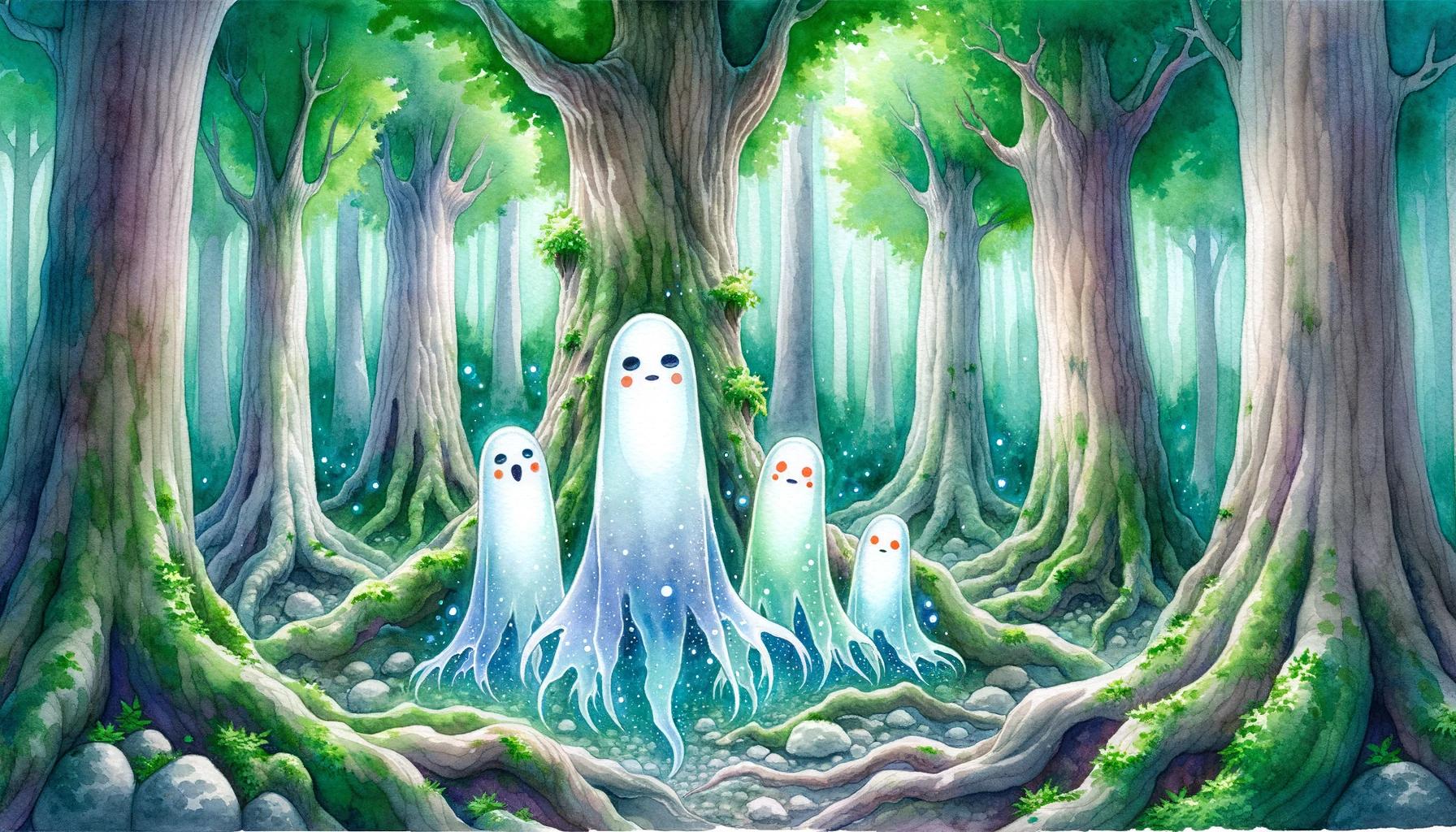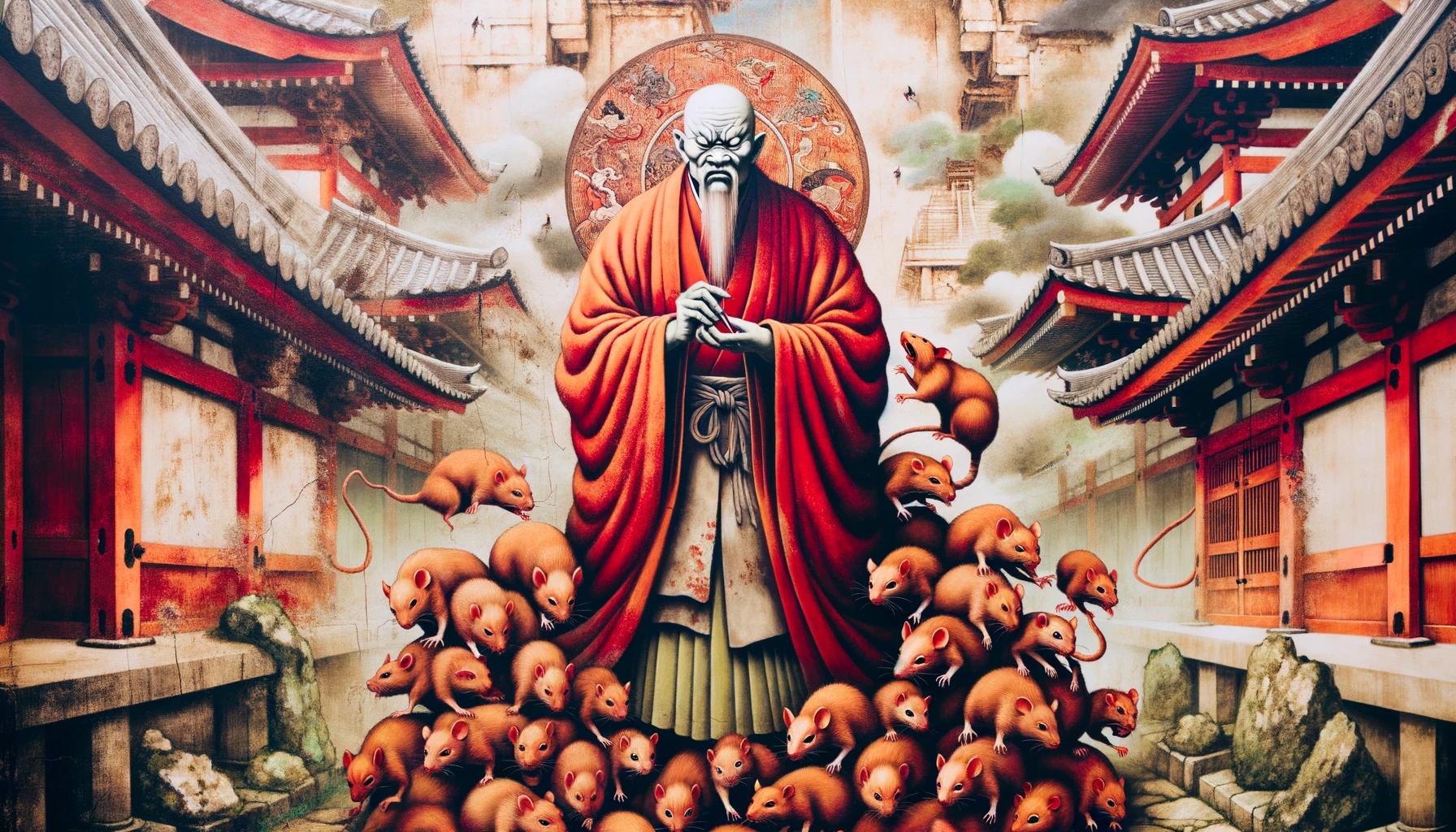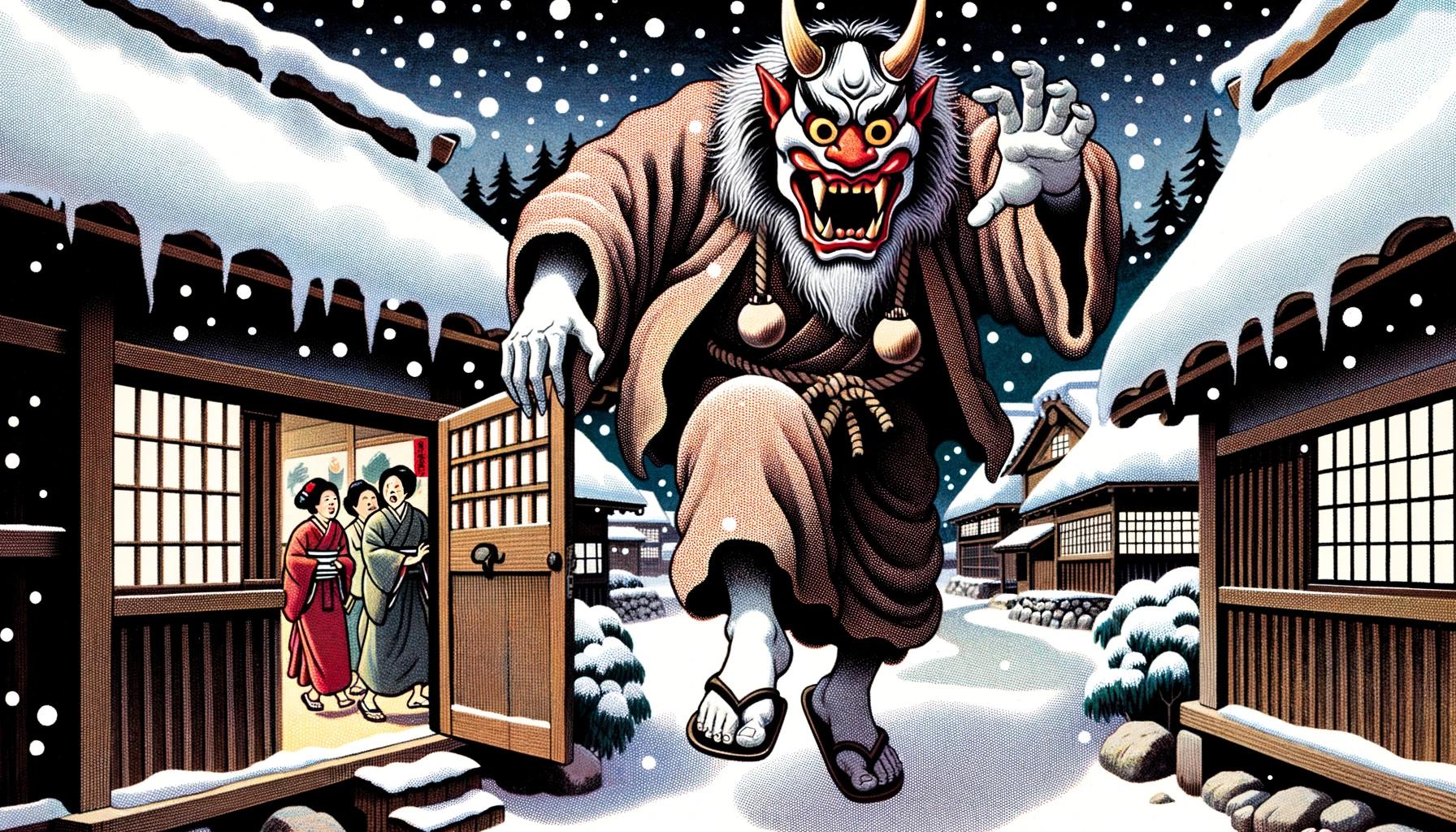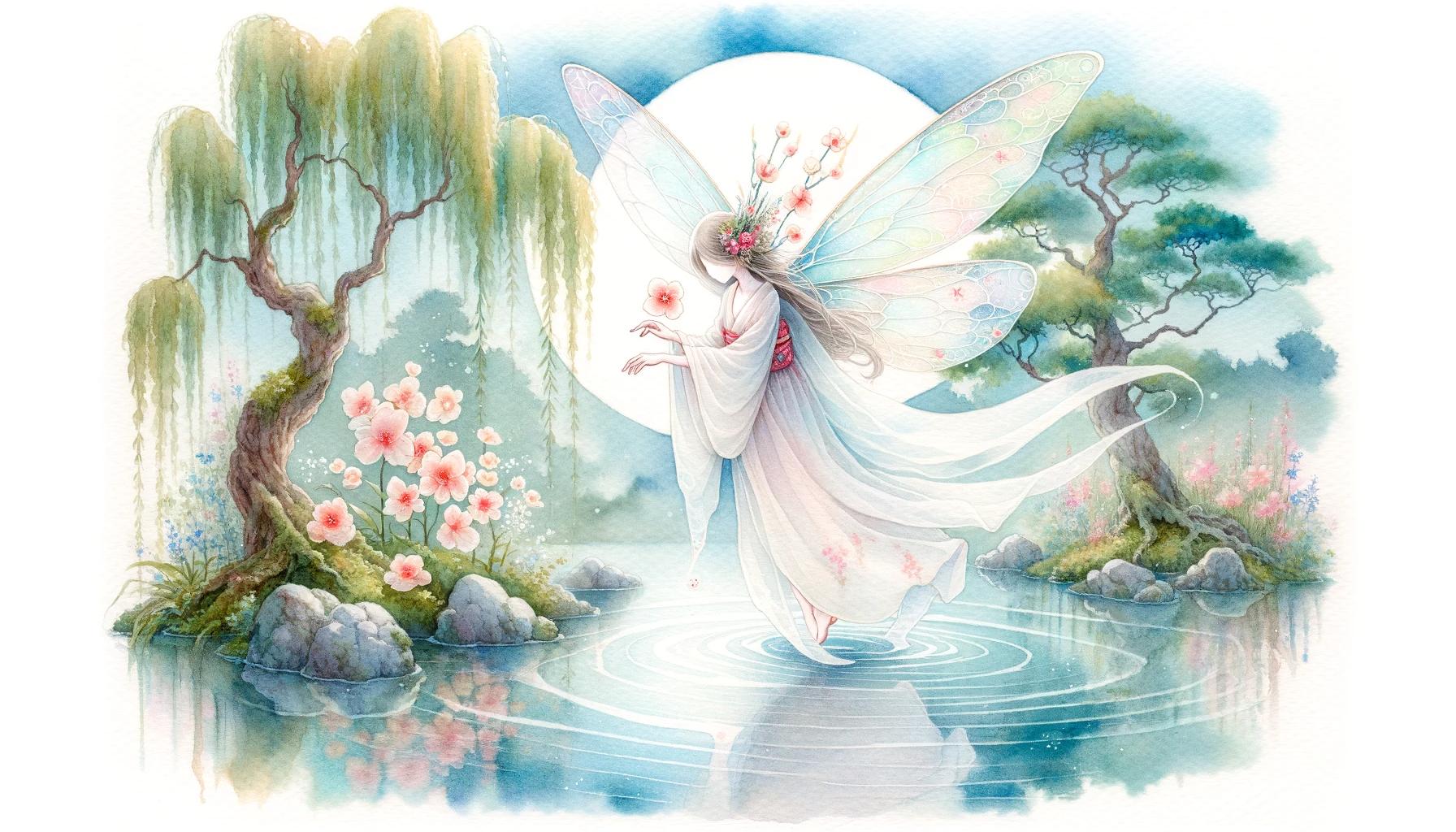What is Kodama in Japanese Mythology: Exploring the Sacred Tree Spirits of Japan

Kodama is a significant entity in Japanese mythology, specifically as the spirits of trees. These mythical beings reside in ancient forests and are intrinsically linked to the life of the trees they inhabit.
Kodama’s appearances vary, ranging from ethereal lights to humanoid figures. Revered as gods of the trees and protectors of forests, they are believed to bless the surrounding lands with vitality. Today, Kodama continue to be venerated in Japan, with rituals, festivals, and an enduring respect for their presence in the natural world.
The Origins of Kodama in Japanese Mythology
The ancient beliefs in tree deities form the foundation of the concept of Kodama in Japanese mythology. In Japanese culture, trees were considered sacred and believed to be inhabited by kami, the nature deities.
These deities were believed to possess supernatural powers and were revered as protectors of the natural world.
The Ancient Belief in Tree Deities
The ancient Japanese people believed that trees had spirits and served as dwelling places for kami. They thought that these tree deities influenced the health, growth, and overall well-being of the forests.
Trees were seen as vessels of divine energy, and their existence was deeply intertwined with the spiritual essence of nature.
The Evolving Concept of Kodama
Over time, the concept of these tree deities evolved, leading to the emergence of Kodama in Japanese folklore. Kodama became associated specifically with the spirits residing within ancient trees. These mystical beings were believed to be delicate in physical form, and their life force depended entirely on the tree that hosted them.
The Significance of Kodama in Japanese Folklore
Kodama gained significant prominence in Japanese folklore as revered entities associated with trees. They were regarded as protectors of the forests, bestowing vitality upon the surrounding lands. Communities honored trees inhabited by Kodama by marking them with sacred ropes called shimenawa.
The cutting of such ancient trees was considered a grave sin, believed to bring forth powerful curses and potentially lead to the downfall of entire communities.
Throughout the centuries, Kodama were both worshipped as nature gods and feared as goblin spirits.
They were thought to possess the ability to move swiftly through the forest or be firmly rooted like the very trees themselves. Legends recounted that the echoes resonating between mountains and valleys were produced by the Kodama, while the sound of a falling tree in the forest was believed to be the lament of one of these spirits.
Today, Kodama continue to be venerated in certain regions of Japan. From placing small shrines at the base of Japanese cedar trees in Aogashima to celebrating annual festivals to pay homage to Kodama in Mitsune when trees are cut for the timber industry, the reverence for these tree spirits persists.
In Okinawa, the spirit of the tree is known as kinushi, further signifying the enduring cultural significance of Kodama and their relationship with the Japanese people and their environment.
Characteristics and Appearance of Kodama
Kodama, the spirits of trees in Japanese mythology, possess unique characteristics and exhibit varying appearances in different interpretations.
Varied Depictions in Traditional Legends
In ancient legends, kodama were often described as invisible or indistinguishable from regular trees. They were believed to be kami, nature deities residing within the trees. Some believed they could move agilely through the forest, while others thought they were rooted like the trees themselves.
Discovering a kodama while cutting down a tree was considered a curse.
Modern Interpretations in Art and Media
In more recent times, kodama have been depicted in different forms in art and media. While older legends portrayed them as invisible, newer illustrations portray kodama as elderly or young figures near a tree.
Renowned filmmaker Hayao Miyazaki, for example, featured kodama as bobble-head dolls with two colors in his film “Princess Mononoke.” These modern interpretations reflect the evolving perception of kodama in popular culture.
Folklore Surrounding Kodama’s Connection to Trees
According to folklore, kodama have a profound connection to the trees they inhabit. They are delicate beings whose very life force depends entirely on the host tree. It is believed that cutting down an ancient tree inhabited by a kodama is a grave sin and can bring about a powerful curse, even leading to the downfall of an entire prosperous community.
Some ancient trees are said to bleed when cut, interpreted as a sign of a kodama’s presence.
Kodama as Guardians of the Forest
Kodama not only represent the spirits of trees in Japanese mythology but also hold the role of guardians for the forests they inhabit. They are revered for their protective nature and the vital role they play in maintaining the balance of the natural world.
The Role of Kodama as Tree Protectors
Kodama are believed to have a profound connection with the trees they reside in, acting as their protectors. They ensure the well-being and longevity of the trees, nurturing them with their presence and energy.
By safeguarding the trees, Kodama contribute to the overall health and harmony of the forest ecosystem.
Rituals and Traditions to Honor Kodama
Throughout history, people have developed rituals and traditions to honor and show respect to Kodama. These practices aim to ensure the continued support and blessings of these sacred tree spirits. One such tradition involves marking the trees inhabited by Kodama with a sacred rope called shimenawa, symbolizing their divine presence.
Communities living near forests often hold ceremonies and festivals dedicated to Kodama. These events involve prayers, offerings, and dances performed to express gratitude and seek protection from these revered spirits. The rituals serve as a way to maintain a harmonious relationship with Kodama and the forests they inhabit.
Legends of Kodama Curses and Misfortune
Legend has it that cutting down a tree inhabited by a Kodama can bring about curses and misfortune upon those responsible. It is considered a grave offense, capable of not only harming individuals but potentially bringing ruin to an entire community.
These cautionary tales serve as a reminder of the powerful and mystical nature of Kodama and the need to respect their domain.
Kodama and Their Relationship to Other Japanese Spirits
Kodama, as sacred tree spirits in Japanese mythology, have an intriguing connection to other spiritual beings and entities within the folklore of Japan. Let’s explore how they relate to kami, oni, yōkai, and other supernatural creatures, as well as the overlapping legends and folklore that intertwine these entities.
Kami: Nature Deities and Kodama
In Japanese folklore, kami are revered as divine spirits that embody natural elements such as mountains, rivers, and trees. Kodama, with their close association to trees, have often been considered as a manifestation of kami.
While kami represent broader aspects of nature, kodama focus specifically on the symbiotic relationship with trees and are regarded as protectors and guardians of the forests in which they reside.
Oni, Yōkai, and Other Supernatural Beings
Oni and yōkai are supernatural beings that play significant roles in Japanese mythology. While kodama are not typically classified as oni or yōkai, they often coexist in the same folklore and legends.
Oni are depicted as malevolent spirits, sometimes associated with forests or natural disasters, while yōkai encompass a wide range of supernatural entities. Kodama, on the other hand, are generally regarded as benevolent spirits, existing in harmony with nature and offering protection to the forests they inhabit.
Overlapping Legends and Folklore
Japanese mythology is rich with interconnected tales and legends, where the boundaries between different spirits and creatures can blur. It is not uncommon to find stories that feature both kodama and other supernatural beings, sometimes in symbiotic relationships and other times in conflict.
The fluid nature of folklore allows for various interpretations and narratives, contributing to the intricate tapestry of Japanese mythology.
Kodama: Sounds of the Forest
Kodama, the spirits of trees in Japanese mythology, are not only visually mysterious but are also closely associated with the sounds of the forest. The echoes that resonate through mountains and valleys hold a mythical quality, believed to be the result of kodama’s presence.
The Mythical Sound of Kodama Echoes
Legend has it that the ethereal echoes heard deep within the woods are created by kodama. As if the trees themselves are whispering secrets and chanting ancient hymns, these haunting sounds captivate the imaginations of those who stumble upon them.
The echoes seem to linger in the air, almost playfully evading immediate return.
Symbolic Interpretation of Falling Trees
Another aspect of the soundscape associated with kodama is the notion of falling trees. When a tree comes crashing down in the forest, it is interpreted as the poignant lament of a kodama departing from its earthly abode.
The solemnity of this sound serves as a reminder of the interconnectedness between these spiritual beings and nature itself, evoking a sense of beauty and transience.
Popular Culture Depictions and Interpretations
Over the years, kodama have made their way into popular culture, serving as inspiration for various artistic renditions.
From literature to film and even video games, their enigmatic allure continues to captivate audiences. Notably, acclaimed filmmaker Hayao Miyazaki featured kodama in his masterpiece “Princess Mononoke,” depicting them as whimsical bobble-head-like creatures.
In modern Japanese society, kodama’s associations with the sounds of the forest persist. Their presence and the ethereal echoes they produce are embraced as part of the nation’s cultural heritage, inspiring a continued fascination and reverence for the natural world.
Join us in our exploration of other intriguing facets of Japanese mythology, as we delve deeper into the captivating realms of kodama, kami, and other supernatural beings.
Contemporary Practices and Beliefs Surrounding Kodama
Contemporary Japanese society still holds reverence for Kodama, especially in certain regions where their presence and significance are deeply ingrained in local customs and beliefs.
Continuing Reverence in Certain Regions
In places like Aogashima, small shrines are placed at the base of ancient Japanese cedar trees, paying homage to the Kodama spirits that inhabit them. This practice reflects the enduring respect and connection to the natural world that remains prevalent in these communities.
Festivals and Worship of Kodama
Mitsune celebrates an annual festival to express gratitude and respect to “kidama-san” or “kodama-san” when trees are cut for the timber industry. This tradition acknowledges the Kodama spirits and seeks to maintain a harmonious relationship with the forest and its inhabitants.
Kodama in Modern Japanese Society
In modern Japanese society, Kodama continue to capture the imagination and inspire creativity. Their enchanting presence can be seen in various forms of art, literature, and popular culture. From paintings and sculptures to films and video games, Kodama hold a special place in the hearts and minds of the Japanese people, serving as a reminder of the deep-rooted connection between humans and nature.
As the world progresses, the significance of Kodama in Japanese mythology persists, reminding us of the importance of preserving and respecting the natural world around us. Their continued presence in cultural practices and beliefs serves as a powerful testament to the lasting impact of these mystical tree spirits.
.



















